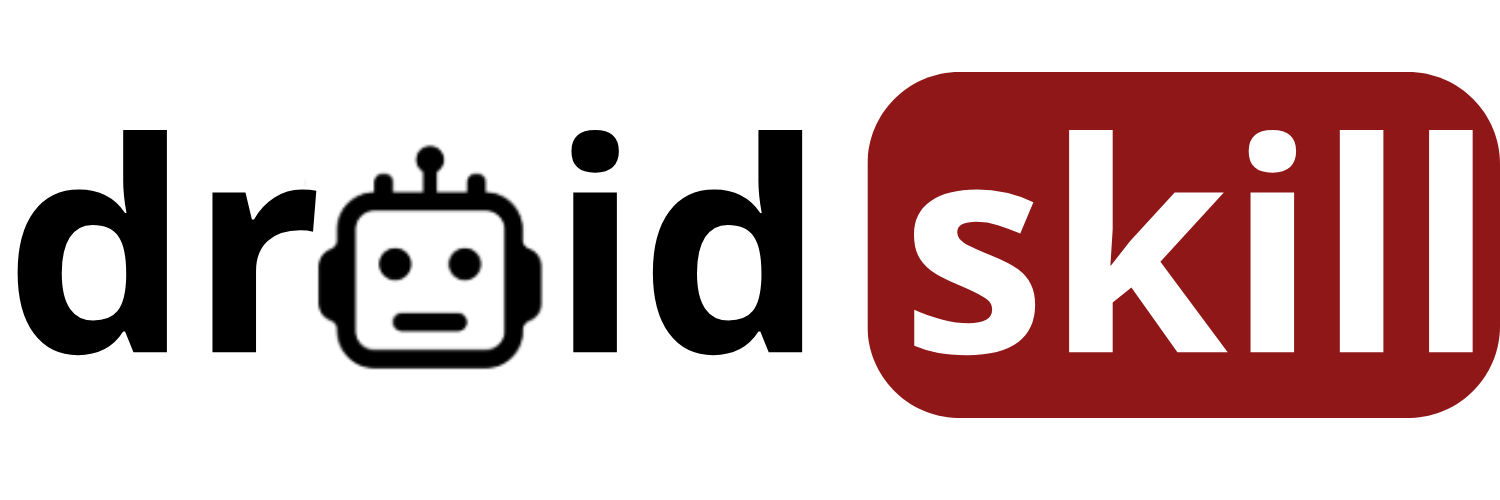Hey Android enthusiasts! Ever felt that pang of dread when you realize you might lose all your precious data – photos, contacts, app settings – on your Android device? We've all been there. Data loss can be a nightmare, whether it's due to a phone malfunction, accidental deletion, or simply upgrading to a new device. But fear not! This guide will equip you with the knowledge and tools to master the art of backing up and restoring your Android data, ensuring your digital life is always safe and sound. We'll explore various methods, from built-in Android features to third-party apps, making the process simple and stress-free.
Why is backing up your Android device so crucial? Imagine losing years' worth of photos, important documents, or crucial contact information. The consequences can be devastating, both emotionally and practically. Regular backups act as a safety net, allowing you to recover your data quickly and easily in case of any unforeseen circumstances. Think of it as insurance for your digital life. It's a small investment of time that can save you a world of heartache later on.
Let's dive into the world of Android backup and restore, exploring the different options available to you. We'll cover everything from Google's built-in backup service to dedicated third-party apps that offer more advanced features and control. By the end of this guide, you'll be a backup and restore pro, ready to protect your valuable data.
1. Google One Backup
Google One Backup is a seamless and integrated solution for backing up your Android device. It automatically backs up your data to Google's cloud, ensuring your information is safe and accessible from anywhere. This includes photos, videos, contacts, calendar events, app data, and more. The best part? It's incredibly easy to set up and use.
To enable Google One Backup, simply go to your device's settings, find the Backup or Google section, and toggle on the Backup to Google One option. You can also customize what data you want to back up, choosing specific categories like photos, videos, or app data. Google One offers different storage plans, so you can choose the one that best suits your needs. The free plan provides 15GB of storage, which is shared across Google Drive, Gmail, and Google Photos. If you need more space, you can upgrade to a paid plan.
Restoring your data from a Google One backup is equally straightforward. When you set up a new Android device or reset your existing one, you'll be prompted to restore your data from a Google account. Simply sign in with the same Google account you used for the backup, and your data will be automatically restored to your device. This includes your apps, settings, photos, and more, making the transition to a new device seamless and hassle-free.
Google One Backup is a fantastic option for most Android users, offering a simple, reliable, and integrated solution for protecting your data. Its automatic backups ensure your data is always safe, and its easy restore process makes switching to a new device a breeze.
Download Google One Backup from Play StoreSearch Google One Backup on Play Store
2. Titanium Backup (Root Required)
For advanced users who have rooted their Android devices, Titanium Backup is a powerhouse of a backup tool. It offers unparalleled control over your backups, allowing you to back up and restore virtually everything on your device, including system apps, data, and settings. This level of control is simply not possible with non-rooted devices.
Titanium Backup allows you to freeze apps, uninstall bloatware, and even convert user apps to system apps. Its backup features are equally impressive, allowing you to schedule backups, batch restore apps, and even back up individual app data. You can also choose to back up your data to various locations, including your device's internal storage, SD card, or cloud storage services like Dropbox or Google Drive.
However, it's important to note that Titanium Backup requires root access, which means you'll need to root your Android device before you can use it. Rooting your device can void your warranty and may pose security risks if not done correctly. Therefore, Titanium Backup is best suited for experienced Android users who are comfortable with the risks and complexities of rooting.
If you're a power user looking for the ultimate backup and restore solution for your rooted Android device, Titanium Backup is an excellent choice. Its advanced features and granular control allow you to protect your data and customize your device to your exact specifications.
Download Titanium Backup from Play StoreSearch Titanium Backup on Play Store
3. Helium App Sync and Backup
Helium App Sync and Backup is a unique backup solution that doesn't require root access for most devices. It uses a desktop client to enable app data backups, allowing you to back up your apps and their data to your computer or cloud storage services. This makes it a great option for users who don't want to root their devices but still want to back up their app data.
To use Helium, you'll need to install the Helium app on your Android device and the Helium desktop client on your computer. Connect your device to your computer via USB, and the desktop client will guide you through the setup process. Once set up, you can select the apps you want to back up and choose a backup location. Helium supports various cloud storage services, including Dropbox, Google Drive, and OneDrive.
Restoring your data with Helium is also straightforward. Simply connect your device to your computer, launch the Helium desktop client, and select the backup you want to restore. Helium will then restore your apps and their data to your device. While Helium doesn't back up everything on your device like Google One Backup or Titanium Backup, it's a great option for backing up your app data without root access.
Helium App Sync and Backup is a solid choice for users who want to back up their app data without rooting their devices. Its desktop client-based approach makes it a bit more complex than other backup solutions, but it offers a good balance between features and ease of use.
Download Helium App Sync and Backup from Play StoreSearch Helium App Sync and Backup on Play Store
4. Samsung Smart Switch
If you're a Samsung user, Samsung Smart Switch is a must-have tool for backing up and restoring your data. It's designed specifically for Samsung devices and offers a seamless and comprehensive backup solution. Smart Switch allows you to transfer data between Samsung devices, back up your data to your computer, or restore your data from a previous backup.
Smart Switch can back up a wide range of data, including contacts, messages, photos, videos, music, apps, and settings. You can choose to back up your data to your computer via USB or wirelessly to an external storage device. The backup process is simple and straightforward, and Smart Switch provides clear instructions every step of the way.
Restoring your data with Smart Switch is equally easy. Simply connect your device to your computer or external storage device, launch Smart Switch, and select the backup you want to restore. Smart Switch will then restore your data to your device, ensuring a smooth and seamless transition. Smart Switch also offers additional features, such as the ability to transfer data from iOS devices to Samsung devices, making it a versatile tool for anyone switching to a Samsung phone.
Samsung Smart Switch is an excellent choice for Samsung users, offering a comprehensive and easy-to-use backup and restore solution. Its seamless integration with Samsung devices and its wide range of features make it a valuable tool for protecting your data.
Download Samsung Smart Switch from Play StoreSearch Samsung Smart Switch on Play Store
5. Local Backup Options: SD Card or Computer
While cloud-based backups are convenient, sometimes you might prefer to keep your backups local, either on an SD card or your computer. This gives you more control over your data and eliminates the need for an internet connection during the backup and restore process. Many Android devices allow you to back up your data directly to an SD card, while others require you to connect your device to your computer and use a file manager to copy your data.
To back up your data to an SD card, check your device's settings for a Backup and Restore option. Some devices allow you to back up your contacts, messages, and other data directly to the SD card. For other data, such as photos, videos, and music, you can simply copy them to the SD card using a file manager app.
To back up your data to your computer, connect your device to your computer via USB and enable USB file transfer mode. You can then access your device's internal storage and SD card (if applicable) from your computer. Simply copy the files and folders you want to back up to your computer. This method is particularly useful for backing up large files, such as photos and videos.
Local backups offer a simple and reliable way to protect your data, especially if you're concerned about privacy or don't have a reliable internet connection. However, it's important to remember to regularly update your local backups to ensure you have the latest version of your data.
There is no direct application for local backup to list in the playstore, as this is a function of the device itself or using a file manager.
Search File Manager on Play Store
Tips for Effective Backup and Restore
Now that you're familiar with the different backup and restore options available to you, here are some tips to help you create an effective backup strategy:
- Choose the right backup method: Consider your needs and technical expertise when choosing a backup method. Google One Backup is a great option for most users, while Titanium Backup is best suited for advanced users with rooted devices.
- Back up regularly: Schedule regular backups to ensure your data is always up-to-date. How often you back up depends on how frequently you change your data.
- Verify your backups: Periodically verify your backups to ensure they are working correctly. Try restoring a small portion of your data to confirm that the backup is valid.
- Store your backups securely: If you're using cloud-based backups, choose a reputable provider with strong security measures. If you're using local backups, store your backups in a safe and secure location.
- Test your restore process: Before you need to restore your data in an emergency, practice the restore process to ensure you know what to do.
- Consider multiple backup methods: For maximum protection, consider using multiple backup methods. For example, you could use Google One Backup for automatic backups and a local backup for important files.
By following these tips, you can create a robust backup strategy that will protect your data from loss and ensure you can quickly and easily restore your data in case of any unforeseen circumstances.
Conclusion
Mastering backup and restore on your Android device is essential for protecting your valuable data. Whether you choose Google One Backup, Titanium Backup, Helium App Sync and Backup, Samsung Smart Switch, or local backup options, the key is to have a backup strategy in place and to back up your data regularly. By following the tips in this guide, you can ensure your digital life is always safe and sound.
Don't wait until it's too late! Start backing up your Android device today and enjoy the peace of mind that comes with knowing your data is protected.
Remember, data loss can happen to anyone. Be prepared and protect your digital life!


